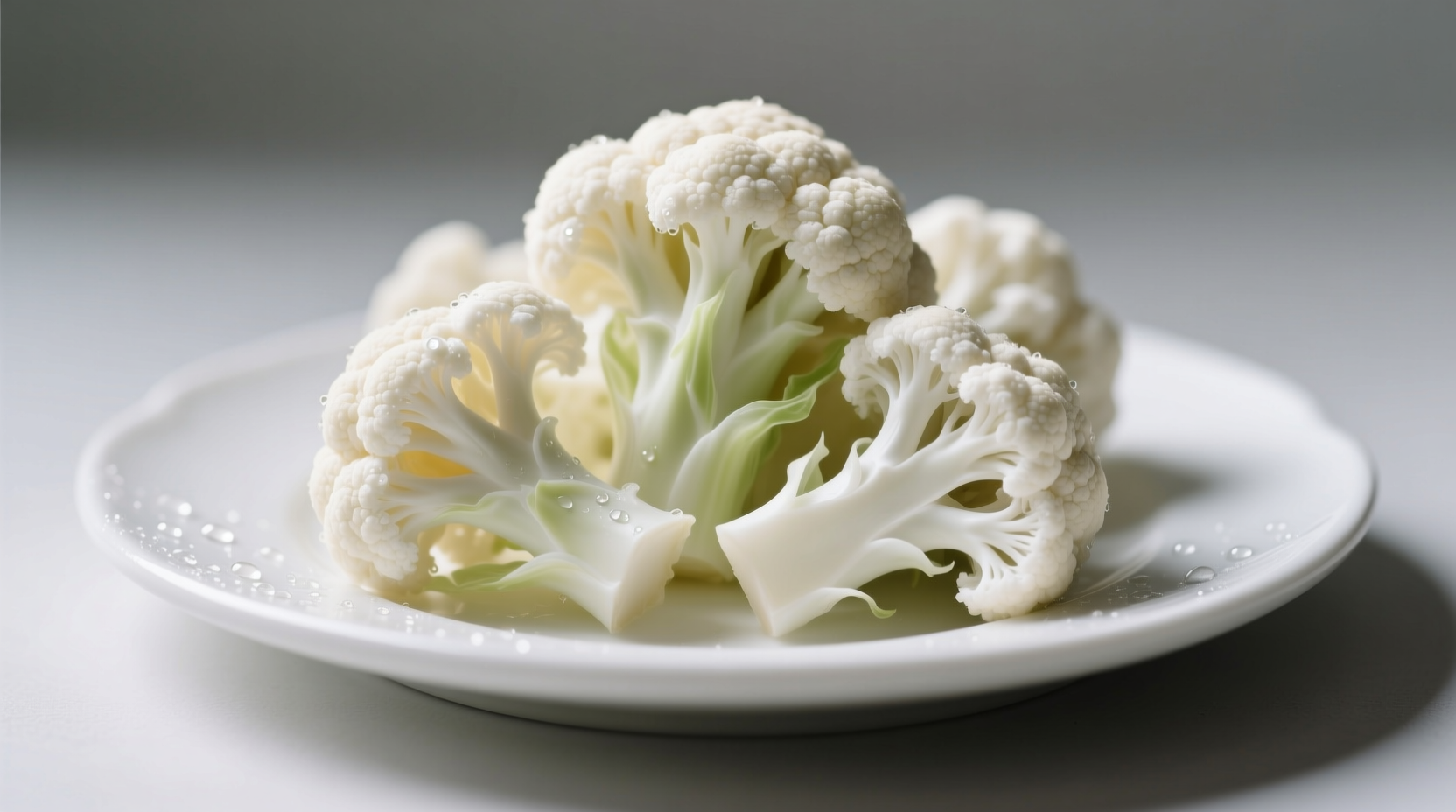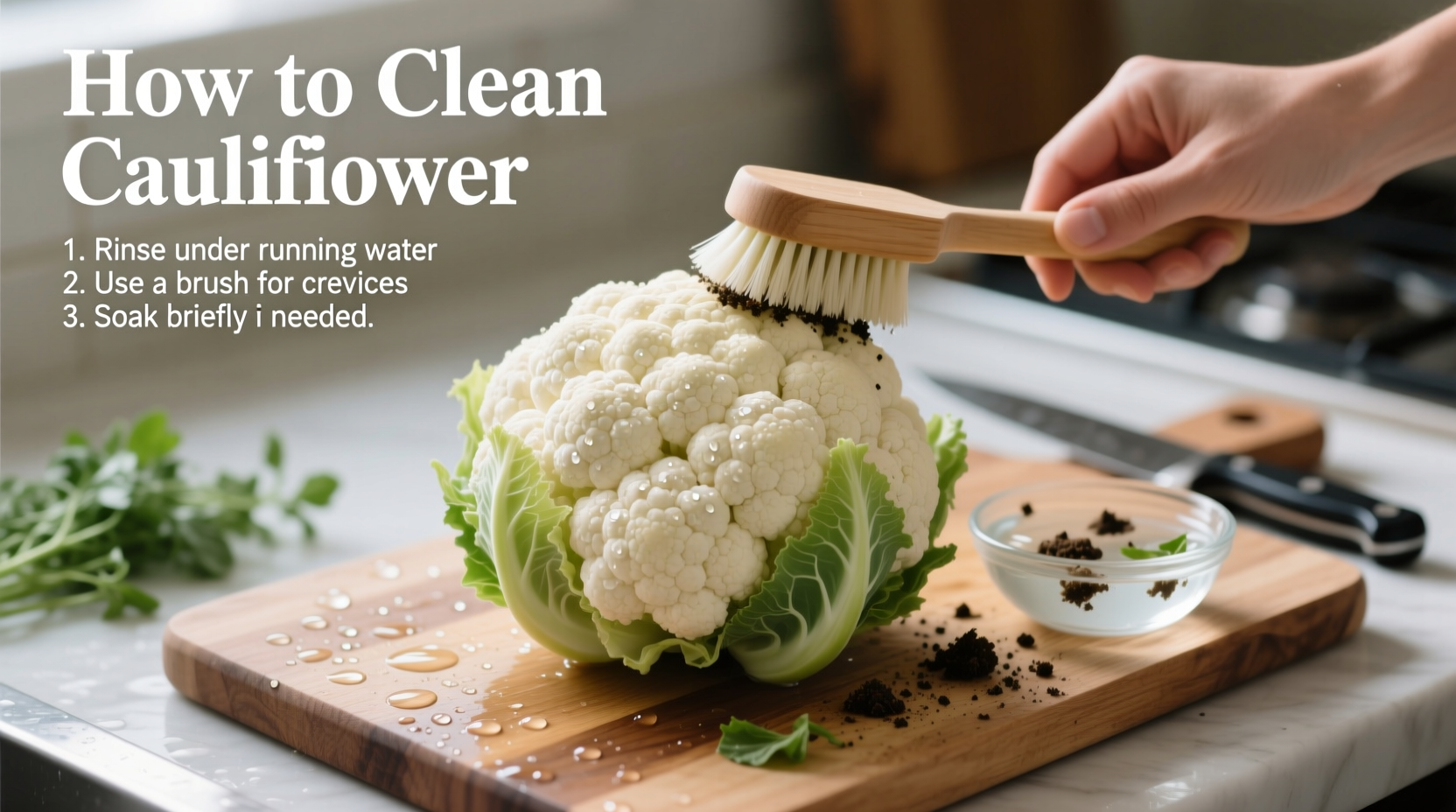Properly cleaning cauliflower removes hidden dirt, insects, and potential pesticide residues. Start by trimming the outer leaves, cutting the stem flush with the base, and soaking the head upside down in saltwater for 10-15 minutes to dislodge pests. Rinse thoroughly under cool running water while gently separating florets, then pat dry with a clean towel before cooking or storing.
Ever sliced into cauliflower only to find tiny insects hiding in the crevices? You're not alone. Many home cooks struggle with properly cleaning this versatile vegetable, leading to wasted food and potential food safety concerns. As a chef who's taught thousands of home cooks professional produce preparation techniques, I've developed a foolproof method that ensures your cauliflower is spotless and ready for any recipe.
Why Proper Cauliflower Cleaning Matters
Cauliflower's intricate curd structure creates perfect hiding spots for soil particles, insects, and agricultural residues. According to the U.S. Food and Drug Administration, thorough washing of produce can reduce potential contaminants by up to 98%. This isn't just about aesthetics—improperly cleaned cauliflower can harbor harmful bacteria like E. coli that survive standard cooking temperatures.
| Cleaning Method | Effectiveness Against Insects | Time Required | Water Usage |
|---|---|---|---|
| Quick Rinse | 15% | 1 minute | Low |
| Saltwater Soak | 92% | 15 minutes | Moderate |
| Vinegar Solution | 88% | 10 minutes | Moderate |
| Running Water Only | 40% | 5 minutes | High |
Essential Tools for Perfectly Clean Cauliflower
You don't need specialized equipment—just these kitchen staples:
- Sharp chef's knife (8-10 inches)
- Large bowl or clean sink basin
- Colander for rinsing
- Clean kitchen towel or salad spinner
- Measuring spoons for solution preparation
Step-by-Step Cleaning Process
Preparation Stage
Begin with proper handling techniques that prevent contamination. Remove any damaged outer leaves and trim the stem flush with the base using a sharp knife. This creates a stable base for the soaking process and prevents water from seeping into the core.
The Saltwater Soak Method (Most Effective)
Fill a large bowl with cold water and add 1-2 tablespoons of salt per quart. Submerge the cauliflower head upside down (stem side up) for 10-15 minutes. This position allows water to penetrate the tight curds while gravity helps dislodge hidden pests. The salt concentration creates an environment where insects cannot maintain their grip.

Rinsing Technique
After soaking, transfer the cauliflower to a colander. Rinse under cool running water while gently separating the florets with your fingers. Pay special attention to the crevices where dirt accumulates. For stubborn debris, use a soft vegetable brush on the thicker stem areas—never on delicate curds.
Drying Properly
Improper drying leads to soggy texture when cooking. Pat dry with a clean kitchen towel or use a salad spinner for 30-60 seconds. For roasting or frying, ensure complete dryness to achieve proper caramelization. If storing, allow to air-dry for 5 minutes before packaging.
Special Considerations
Organic vs. Conventional Cauliflower
While organic cauliflower may have fewer pesticide residues, it's actually more likely to harbor insects according to USDA organic farming guidelines. Organic farms permit certain biological pest controls that can leave more visible insect activity. Always clean organic produce thoroughly using the saltwater method.
Dealing with Persistent Pests
If you frequently find insects despite proper cleaning, try a vinegar solution (1 part white vinegar to 3 parts water) for 5 minutes before the saltwater soak. The acidity disrupts insect exoskeletons. Never use soap or commercial produce washes—these can leave chemical residues that absorb into the porous vegetable.
Storage After Cleaning
Cleaned cauliflower maintains freshness for 3-4 days when stored properly. Wrap in a slightly damp paper towel inside an airtight container in your refrigerator's crisper drawer. For longer storage, blanch florets for 3 minutes, cool in ice water, then freeze in portion-sized bags for up to 12 months.
Common Mistakes to Avoid
Even experienced cooks make these errors that compromise food safety and quality:
| Mistake | Why It's Problematic | Better Approach |
|---|---|---|
| Soaking right side up | Water traps insects inside curds | Always soak upside down |
| Using hot water | Cooks outer layers, creates soggy texture | Use cold water only |
| Rubbing florets aggressively | Causes bruising and moisture retention | Gentle separation with fingertips |
| Storing wet cauliflower | Promotes bacterial growth and spoilage | Dry completely before storage |
When Time is Limited: Quick Cleaning Method
For last-minute cooking needs, follow this 5-minute technique: Cut into florets, place in colander, and rinse under running water while gently shaking. Fill the sink with cold water, submerge florets, and swish vigorously for 30 seconds. Drain and repeat. Though less effective than the full method, this removes approximately 75% of surface contaminants according to University of Illinois Extension food safety research.











 浙公网安备
33010002000092号
浙公网安备
33010002000092号 浙B2-20120091-4
浙B2-20120091-4